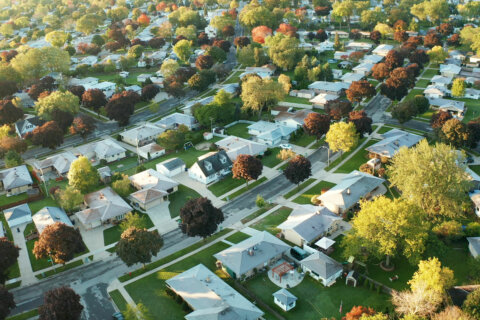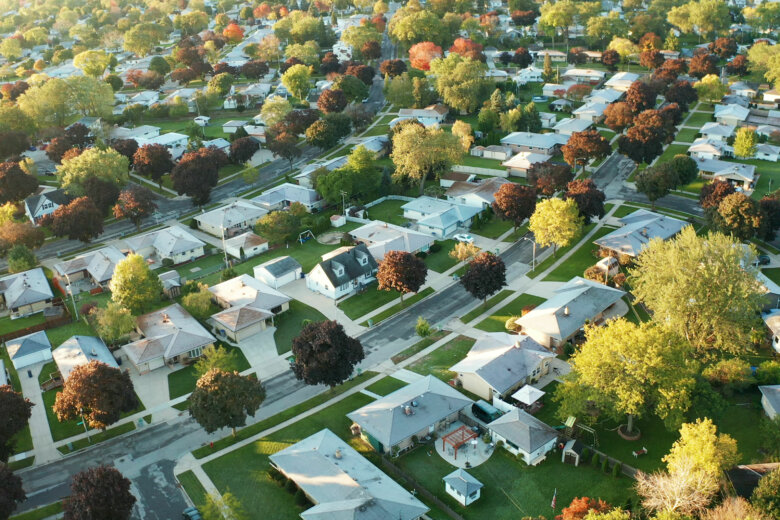
How does your neighborhood rank in terms of opportunity for your child to grow into a healthy, well-educated and employable adult?
If you live in one of the thousands of neighborhoods examined in the Child Opportunity Index 2.0, where two-thirds of all American children live, then you can look for yourself.
The index, funded by the W.K. Kellogg Foundation and Robert Wood Johnson Foundation, has amassed a treasure trove of information that can tell parents — and policymakers — how their neighborhood could impact their child’s development.
Why do neighborhoods matter? Because research shows that where you grow up affects your life expectancy, economic mobility, and even your stress level, the report says.
For example, people in very high opportunity neighborhoods have a life expectancy of 82 years, while those who live in low-opportunity neighborhoods are expected to live to 75, a seven-year difference, the report said.
And children who grew up in poor neighborhoods had an average income of $29,000 at age 35, while those who grew up in very high-opportunity environments made around $45,000.
What the index measures
The first iteration of the Child Opportunity Index, which launched in 2014, was a collaboration between Brandeis University’s Institute for Child, Youth and Family Policy, the Diversitydatakids.org Project and the Kirwan Institute for the Study of Race and Ethnicity at the Ohio State University.
Its goal was to be a “comprehensive and useful tool for people who are working to improve the lives of vulnerable children and promote racial/ethnic equity.”
A new version, called Child Opportunity Index 2.0, published Wednesday. This index is the first to provide “a single, consistent metric of childhood opportunity” in every neighborhood across the United States, said lead researcher Dolores Acevedo-Garcia, who is the director of the Institute for Child, Youth and Family Policy at Brandeis University.
The interactive tools on the site only look at the data on the 47,000 neighborhoods in the largest 100 metro areas based on census data; information on all 72,000 neighborhoods in the US can be downloaded here.
The tool allows comparisons and insights into how city and state resources are being used by ranking each neighborhood on 29 factors that contribute to a child’s healthy development.
For example, the tool looks at the availability of quality childhood education centers, access to green spaces and healthy food, air pollution and health insurance coverage, academic success, graduation rates and the number of workers in high-skill jobs. It also takes into account an area’s poverty and employment levels, housing vacancies and home ownership rates, among others.
The neighborhoods are then given a ranking from zero to 100 based on those measures.
The metro areas with the highest child opportunity scores are in the Plains states and in New England, the report says. Metro areas in the South, with a few exceptions, have notably lower scores than the northern areas.
Top prize for neighborhood opportunity in the United States went to Madison, Wisconsin, with a Child Opportunity Score of 83. “Virtually no children of any race live in very low-opportunity neighborhoods there,” the report said.
The worst score goes to Bakersfield, California, where 51% of children live in very low-opportunity neighborhoods, the report said. Bakersfield’s Child Opportunity Score is 20.
However, another California town, San Jose, ranked second with a childhood opportunity score of 82.
Obvious inequities
The data can also be sorted by education, health, environment, social and economic measures to see if children are receiving equal access to neighborhood opportunity by race and ethnicity.
“Can your children play in the park? Walk safely to school? Go to good schools?,” Acevedo-Garcia asked. “The Child Opportunity Index can tell a story that is not only effective in terms of understanding neighborhoods, but also indicates where policy or action may be needed.”
It turns out that inequities are more common between neighborhoods in the same city than they are across the country as a whole, the report says. To illustrate the issue, Acevedo-Garcia focuses on two neighborhoods in Detroit, Michigan.
“These neighborhoods are next to each other, but are very very different in terms of child opportunities,” she said. In neighborhood A, more than 50% of the children attend preschool, have good access to green spaces to play and have easy access to healthy food. There’s also a low vacancy and poverty rate.
In the “B” neighborhood, more than half the families live in poverty with a high vacancy rate. The area also scores low on other measurements, such as early elementary attendance, access to green spaces and healthy food.
“Sadly we find this huge contrast in many places,” Acevedo-Garcia said.
The index found the strongest predictor of child neighborhood opportunity to be race and ethnicity. Across the 100 largest metro areas, the score for neighborhoods where white children live is 73, compared to a score of 33 for Hispanic children and 24 for black children.
“With the right neighborhood conditions, a child’s potential is limitless,” said La June Montgomery Tabron, president and chief executive officer of the W.K. Kellogg Foundation, in a statement. “I’d like to see leaders across the country — at every level and in every sector — tap into this data and work together to make every child’s neighborhood one of equitable opportunity.”








